An Old Testament KnoWhy[1]
Gospel Doctrine Lesson 9:
“God Will Provide Himself a Lamb”
(Abraham 1; Genesis 15-17; 21-22) (JBOTL09A)
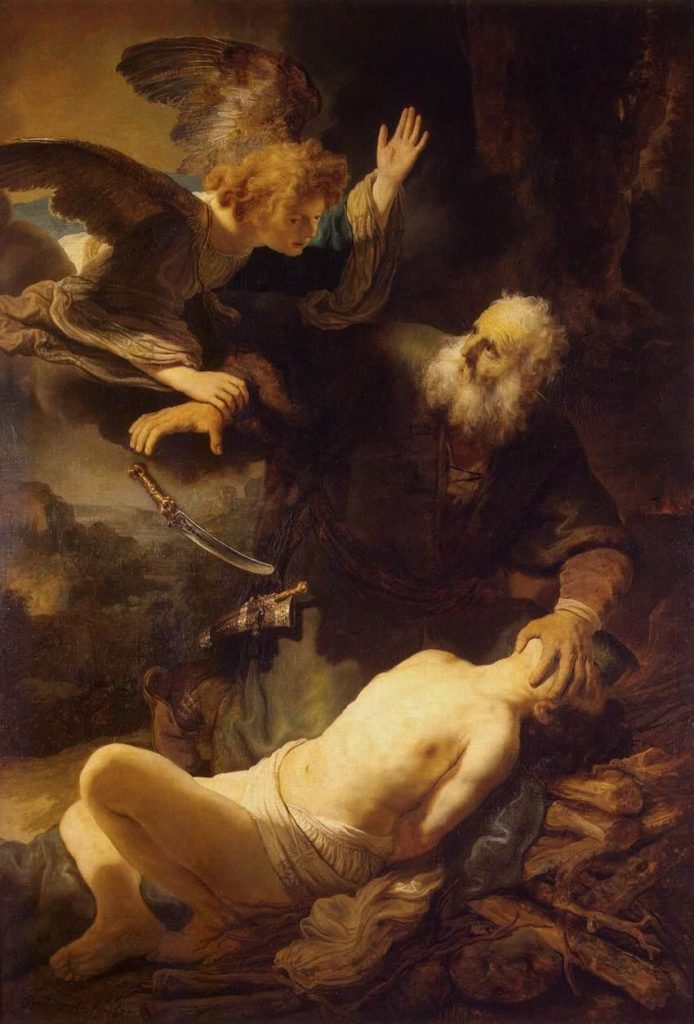
Figure 1. Rembrandt Harmenszoon van Rijn (1606-1669): The Sacrifice of Isaac
Question: In his willingness to offer up Isaac in sacrifice, Abraham made an unthinkable choice — a choice that opposed reason,[2] went contrary to the commandments,[3] seemed to nullify God’s prior promises,[4] and must have made his whole soul recoil in moral repugnance.[5] Does the Lord require every disciple to make a similar choice?
Summary: It is one thing to choose the right when the right seems reasonable and blessings for obedience seem obvious. It is another thing to bow in humble submission when “the thought makes reason stare”[6] and the rewards of faith are not forthcoming. This article will show how Abraham, Sarah, Isaac, and Hagar each experienced such tests, as have many in modern times. The relevance of these tests to temple covenants and blessings is made apparent, as is the need for the rescuing power of the Atonement. Will something of a similar nature be required sooner or later of every disciple? Elder Neal A. Maxwell taught: “If we are serious about our discipleship, Jesus will eventually request each of us to do those very things which are the most difficult for us to do.”[7] Thus, “sometimes the best people have the worst experiences because they are the most ready to learn.”[8]
The Know
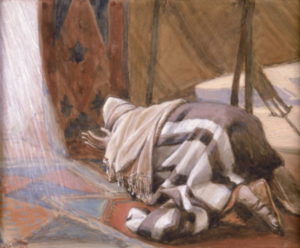
Figure 2. Jacques Joseph Tissot (1836-1902):
God’s Promises to Abram
What is an Abrahamic test? To undergo an Abrahamic test is to be “chastened and tried, even as Abraham, who was commanded to offer up his only son.”[9] It is, as Elder Bruce C. Hafen termed it, to experience a “divine tutorial”[10] whereby one’s faith becomes “sufficiently strong to lay hold upon the promise of eternal life,”[11] “knowing (not believing merely) that [one has claim on] a more enduring substance.”[12] “Many of us will say that we do not have that kind of faith,” observed Truman G. Madsen. But “I submit to you that you do not have that kind of faith until you pass that test.”[13]
President John Taylor “heard the Prophet Joseph say, in speaking to the Twelve on one occasion: ‘You will have all kinds of trials to pass through. And it is quite as necessary for you to be tried as it was for Abraham and other men of God, and (said he) God will feel after you, and He will take hold of you and wrench your very heart strings, and if you cannot stand it you will not be fit for an inheritance in the Celestial Kingdom of God.’”[14] The Prophet is remembered as having taught “that if God had known any other way whereby he could have touched Abraham’s feelings more acutely and more keenly he would have done so.”[15]
Whether the test results from situations that expose our own weakness,[16] from the need to respond humbly and charitably to what might seem to be the weakness of others,[17] or from a call to confront daunting, sometimes incomprehensible circumstances beyond anyone’s control —and even if the challenges seem to come directly as a result of our efforts to do what is right — a fitting response to an Abrahamic test will require utter faith, courage, and consecration. At these times, according to Terryl L. Givens, it is “our obligation to know that [the] voice [that directs us] is emanating from a divine source.” “Once we have that assurance,” he continued, “then the rationality [of the directive] is irrelevant.”[18]
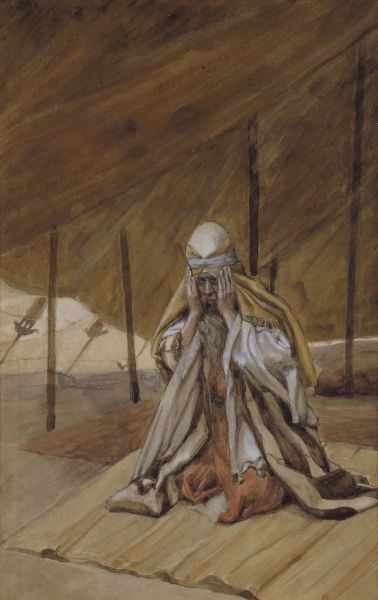
Figure 3. Jacques Joseph Tissot (1836-1902):
God Renews His Promises to Abraham
The test of Abraham. The opening of Genesis 22 discloses to the reader something that Abraham did not know, namely that God’s entreaty[19] to sacrifice Isaac had been made in order to “tempt” (King James Version) or “try” (Joseph Smith Translation) or “test”[20] him. By stating this purpose at the outset, the narrator of the chapter precluded “any possible misunderstanding [by the reader] that God requires human sacrifice as such,”[21] a point that is especially relevant in light of Abraham’s own near-death as a child by that means.[22] Instead, what God wanted was for “Abraham … to learn something about Abraham.”[23]
Important for each of us is that God’s intervention in the family line of Abraham, “assigning a valiant spirit to break the chain of destructiveness,” provided a clean start for his wives and children. Although Abraham suffered innocently as the child of an idolatrous father, “through the grace of God [he found] the strength to [neutralize] the poison within [himself], refusing to pass it on to future generations. Before [him] were generations of destructive pain; after [him] the line flows clear and pure.”[24]
Abraham knew God’s voice through long experience. His faith in God’s covenants was sure, knowing that “Jehovah could raise his son from the dead if necessary in order to fulfill the promise”[25] of posterity through Isaac. Once God had spoken, there were no long, agonizing soliloquies, no impassioned protests, no doleful mournings in anticipation of his presumed loss. “He who was so daringly eloquent on behalf of the people of Sodom surrender[ed] in total silence to his own bitter personal destiny.”[26] The only hint of a temporary loss of composure is in the confused sequence of preparations that commenced early the next morning.[27]
What can we learn from Abraham’s response? That the sign of absolute faith is not found in the gross sequence of motions that outwardly proclaim obedience, but in the subtleties of a perfect inner grace that accompanies their performance, an authentic, loving response to a divine call whose flawless pose is unappreciated by ordinary observers but not unseen by God.

Figure 4. Annika Sheaff performs the Grand Jeté with seeming effortlessness[28]
The great Danish Christian philosopher Soren Kierkegaard (1814-1855) compared Abraham’s “leap by faith” to the leap of a skilled ballet dancer.[29] He wrote: “[I]t is supposed to be the most difficult feat for a ballet dancer to leap into a specific posture in such a way that he never once strains for the posture but in the very leap assumes the posture. Perhaps there is no ballet dancer who can do it — but [Abraham] does it.”[30]
We of lesser faith “are unable to assume the posture immediately, [we] waver for a moment,” and this wavering proclaims the imperfection of our posture.[31] On the other hand, the perfectly executed leap is not one of “bravura or virtuoso display,” but rather “a refined, technically demanding kind of dance; one that capture[s] a sense of lightness and the ethereal.”[32] When a call for faith comes to someone like Abraham, the response is reflexive. There is no pause for preparation, no need to muster courage and strength, but only what seems to be an immediate, effortless bridging of the chasm of earth and heaven,[33] a flying embrace of divine futurity, with no looking back.[34]

Figure 5. Rembrandt Harmenszoon van Rijn (1606-1669): Abraham Caressing Isaac
Abraham’s sudden engagement with his divine mission required a successive exit from each tie that bound him to his former life: “Get thee out of thy country, and from thy kindred, and from thy father’s house.”[35] Sarna notes that the elements of God’s directive are “arranged in ascending order according to the severity of the sacrifice involved: country, extended family, nuclear family.”[36] When he reached the time of his greatest trial, in “striking verbal echoes” of his first call, God called him to make the supreme sacrifice of the one for whom he had been waiting and praying his whole life: “your son, your favored son, Isaac, whom you love.”[37]
Abraham’s response to the divine request enabled him to develop and demonstrate to the utmost degree his readiness to “patiently endure,” thus qualifying to “obtain the promise” by a personal oath from the Father that he would attain eternal life,[38] and that his beloved wives and sons would be “secured [to him] by the seal wherewith [he would be] sealed.”[39] In the end, Abraham’s binding of Isaac for the sacrifice was revealed as the necessary prelude for God’s binding of Isaac to Abraham for eternity.[40]
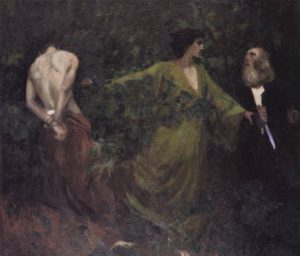
Figure 6. Károly Ferenczy (1862-1917):
Abraham’s Sacrifice
The Test of Isaac. In discussions of Genesis 22, Isaac is often treated as a passive foil to Abraham in his trial. But there is no doubt that in this experience Isaac, a man who possessed (we might suppose) the same apparent soberness faith that belied the age of the young Moroni,[41] also learned something about Isaac. Truman G. Madsen summarizes extrabiblical traditions to argue that Isaac’s obedience was no less voluntary than Abraham’s:[42]
If we can trust the Apocrypha, there are three details that the present narrative omits. First, Isaac was not a mere boy. He was a youth, a stripling youth on the verge of manhood. Second, Abraham did not keep from him, finally, the commandment or the source of the commandment. But having made the heavy journey (how heavy!), he counseled with his son. Third, Isaac said in effect: “My father, if you alone had asked me to give my life for you, I would have been honored and would have given it. That both you and Jehovah ask only doubles my willingness.” It was at Isaac’s request that his arms were bound, lest involuntarily but spontaneously he should resist the sinking of the knife. Though many have assumed it to be so, only the Book of Mormon records a prophet’s words saying that this was in “similitude of God and his Only Begotten Son.”[43]
In Hebrews 11:19, the evidence of absolute consecration of Abraham and Isaac is described using the language of death and resurrection.[44] In trying to make sense of this idea, we might remember that in some Jewish[45] and early Christian[46] creedal formulations bearing on accounts of Abraham’s sacrifice, one finds the idea that Isaac actually died, ascended to heaven, and was resurrected — though perhaps this tradition makes more sense if we remember that the symbolism of death and resurrection fits equally well in the figurative context of temple ritual and its literal equivalent in actual heavenly ascent.[47]

Figure 7. Detail from the Torah Shrine of the Dura Europos Synagogue[48]
For example, consider this close-up of the decorations located immediately above the Torah niche in the late second century Dura Europos synagogue.[49] The entire panel is rich with symbols of resurrection and eternal life: the menorah as a stylized Tree of Life (left), a representation of the doors of the Temple in Jerusalem (center), and the sacrifice of Isaac by Abraham (right). In front of the altar on which Isaac is lying, a ram caught in a tree is shown. In the background is what appears, at first glance, to be someone in a tent. Although the figure in the background is sometimes identified as Sarah,[50] women in the other Dura murals are always shown wearing colored clothing. Besides, it is difficult to see why Sarah would have been pictured at the scene of sacrifice.
In light of the tradition that, in Isaac’s experience on Mount Moriah, he died, ascended to heaven, and was resurrected, Margaret Barker[51] interprets the figure standing at an entrance as “going up behind a curtain held open by a disembodied hand — the symbol of the lord [shown immediately to the left of the curtain]. Since the temple curtain [veil] represented access to the presence of God, this seems to depict Isaac going to heaven.”[52] Going further, it must be observed that Barker’s description actually raises not one but three interpretive possibilities: 1. an actual death and resurrection; 2. a temporary ascent to the heavenly temple (as when Abraham received God’s sure promise); and 3. a figurative entry into God’s presence through ritual.
What can we learn from Isaac’s near-sacrifice? In the temple sacrifices of ancient Israel — which pointed back to Isaac’s arrested sacrifice and pointed forward to Jesus’ unarrested sacrifice — the people were to “see” their own arrested sacrifice and redemption, having been spared the shedding of their own blood through the Atonement. Harold Attridge concluded that “Isaac’s rescue from virtual death[53] on the sacrificial pyre is symbolic of the deliverance that all the faithful can expect.”[54]
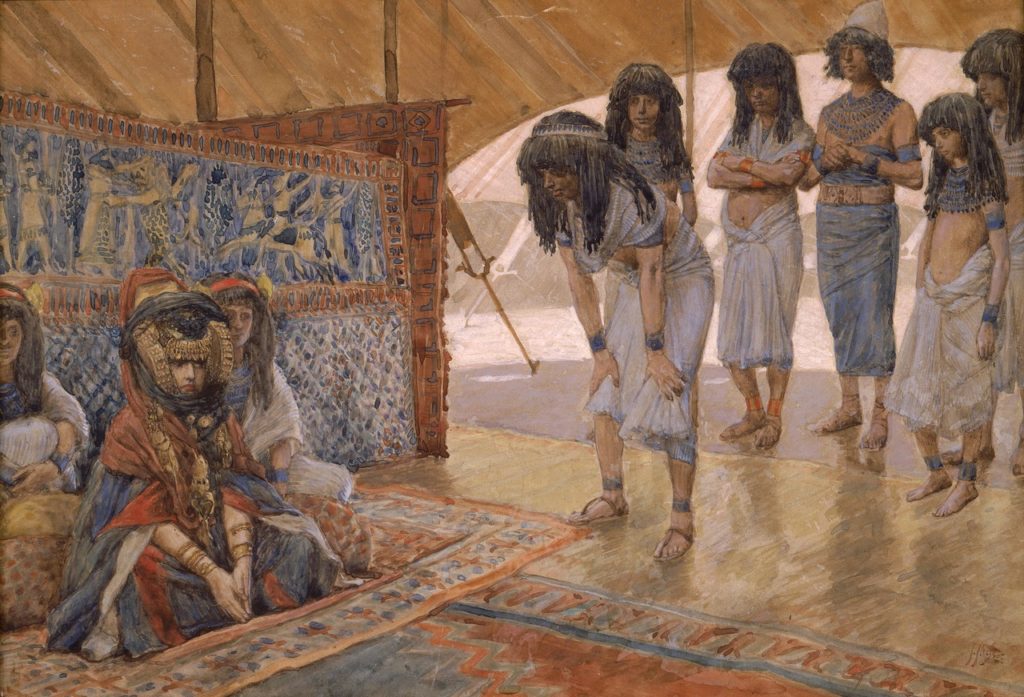
Figure 8. Jacques Joseph Tissot (1836-1902): Sarah Is Taken to Pharaoh’s Palace
The test of Sarah. Although Sarah’s role is backgrounded in the story of Isaac’s near-sacrifice, she is front and center in Genesis 12 and 20 where she is twice taken as a prospective wife by foreign rulers Pharaoh and Abimelech. Tissot’s painting shows Sarah’s understandable discomfort with being ogled at close range by the passing men of Pharoah’s court.
Every Bible scholar has commented on the duplication of both primary themes and specific language in Genesis 12 and 20. Following the lead of Umberto Cassuto’s pioneering insight that “all the Abraham stories were … duplicates of one another,”[55] Gary Rendsburg has detailed a complex, unifying structure of parallel stories that flow through the book of Genesis from start to finish.[56]
However, while not diminishing the value of Rendsburg’s analysis, Hugh Nibley posited an additional hypothesis to explain the two close variants of Sarah’s story: namely, that, as we have seen already with regard to certain traditions about Isaac’s sacrifice, something akin to the two accounts of her trials might have been used in former times as a means to explain and illustrate ritual.[57] For example, following the logic of Nibley, just as the story of Enoch’s city provided a perfect context for lecture on the law of consecration, one might see the themes of Sarah’s story as a natural fit for a discussion of something like the laws of obedience, sacrifice, or chastity. Wrote Nibley:[58]
It was now [Sarah’s] turn to face the test of the “lion couch” [just as her husband once had been tested in Abraham 1:7-15]! As we have seen, not only the royal altar but also the royal bed was a lion couch. And this was to be more than a test of Sarah’s virtue, for should she refuse, the king would be mortally offended — with predictable results for the lady. …
It is she and she alone who is being tested … this time. It is incorrect to say with Graves that “Abraham gave Sarah to Pharaoh,” for he was in no position to do so: he was completely in Pharaoh’s power — he had already taken Sarah by force — and Pharaoh was listening only to Sarah! … [T]hroughout the story every crucial decision rests with Sarah and Sarah alone. …
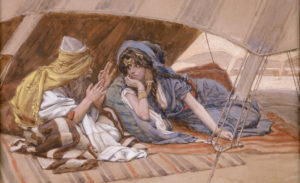
Figure 9. Jaques Joseph Tissot (1836-1902):
Abram’s Counsel to Sarah
There was nothing in the world to keep her from exchanging her hard life with Abraham for a life of unlimited ease and influence as Pharaoh’s favorite except her loyalty to her husband. By a special order from heaven Abraham had stepped out of the picture and Pharaoh had been placed in a legally and ethically flawless position, and Sarah knew it: “I Abraham, told Sarai, my wife, all that the Lord had said to me.”
Why is the brilliant prospect of being Queen of Egypt never mentioned as an inducement or even a lightening of Sarah’s burden? Sarah apparently never thinks of that, for she was as upset as Abraham: “Sarai wept at my words that night.” Still, the proposition was never put to her as a command, but only as a personal request from Abraham: “Please say you are my sister for the sake of my well being, so that through your ministration I shall be saved, and owe my life to you!”;[59] and so with Abimelech: “This will be a special favor which I am asking of you in my behalf.”[60] Abraham is abiding by the law of God; the whole question now is, Will Sarah abide by the law of her husband? And she proved that she would, even if necessary at the risk of her life. It was as great a sacrifice as Abraham’s and Isaac’s, and of the same type. …
[T]he stories of Isaac and Sarah teach us that salvation is a family affair, in which, however, each member acts as an individual and makes his own choice, for each must decide for himself when it is a matter of giving up all things, including life itself, if necessary. But “when the Lord has thoroughly proved him, and finds that the man is determined to serve Him at all hazards,” only then “the visions of the heavens will be opened unto him,” as they were to Abraham, “and the Lord will teach him face to face, and he may have a perfect knowledge of the mysteries of the Kingdom of God.” If Abraham knew that “God would provide a sacrifice,” Isaac did not; if he was perfectly sure of his wife, she was not and prayed desperately for help — husband, wife, and son each had to undergo the terrible test alone.
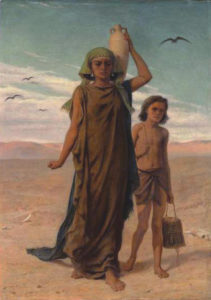
Figure 10. Frederick Goodall (1822-1904): Hagar and Ishmael, 1879
The test of Hagar. In insightful papers by LDS scholars Andrew C. Smith[61] and Jonathon M. Riley[62] we learn much about the neglected character and role of Hagar in biblical, Islamic, and LDS tradition. Smith notes that, unfortunately, Hagar often has been portrayed in a secondary role “as one of the characters defined largely by their positions vis-à-vis the ‘main characters’ of the narrative.”[63] However, within LDS and non-LDS discourse, “[s]he is steadily being granted a role more equal to that of Sarah as a covenant wife of Abraham, albeit with a different ‘calling’ or role.”[64]
Indeed, Smith notes that “in some later Jewish traditions, Hagar is said to have … fully converted to the covenant religion of Abraham, and taken a new name, Keturah (which most consider to be Abraham’s third wife), and is reunited with Abraham after Sarah’s death.”[65]
With respect to the present article’s theme of Abrahamic tests in the lives of others within Abraham’s immediate family, there is good reason to believe that Hagar’s experience is no less a trial than Abraham’s. Bible scholar Nahum Sarna observes that the story of Isaac’s near sacrifice in Genesis 22 “is organically connected with the preceding chapter [about Hagar and Ishmael]. Abraham has lost [the company of] one son [Ishmael] and now seems about to lose the other [Isaac]. In both narratives, the child is saved by divine intervention at the critical moment, the only two biblical instances of an angel calling from heaven to human beings. In both cases there is a fortuitous discovery: a well of water in the earlier story, a ram in the thicket here.”[66]

Figure 11. Rembrandt Harmenszoon van Rijn (1606-1669): Angel Appears to Hagar
Going further, Riley shows how Hagar’s narrative also deeply resonates with parallel stories of additional prophets besides Abraham. He finds significant patterns of allusions to Hagar’s story in the Exodus narrative[67] as well as the story of Elijah.[68] These all go to show that Paul’s contrast in Galatians 4:22-31 between Hagar (the “bondmaid”) and Sarah (the “freewoman”) as an allegory describing the difference between Judaism and Christianity should be taken as useful rhetorical fodder, not as a literal characterization of Hagar herself as an individual.[69] Rather, Hagar, in company with the prophets Abraham, Moses, and Elijah, can be seen as an exemplars sharing a common model of faithfulness and eventual reward after trial.
This is not all, however. In the casting out and redemption of Hagar, Smith argues that “the author of the Hagar passages wanted to draw attention back to the earlier story of Adam and Eve in the Garden. … It is plain that the author of the story wanted Hagar to be seen as a parallel to the great mother figure,”[70] Eve — thus becoming a model for following the road of return to the presence of God for each of Eve’s daughters and sons.
The Why
Hugh Nibley sums up the principle of sanctification through faithfulness in Abrahamic tests as follows:[71]
The gospel is more than a catalogue of moral platitudes; these are matters of either eternal life or nothing. Nothing less than the sacrifice of Abraham is demanded of us.[72] But how do we make it? In the way Abraham, Isaac, and Sarah all did. Each was willing and expected to be sacrificed, and each committed his or her all to prove it. In each case the sacrifice was interrupted at the last moment and a substitute provided: to their relief, someone else had been willing to pay the price, but not until after they had shown their good faith and willingness to go all the way — “lay not thy hand on the lad … for now I know.”[73]
Abraham had gone far enough; he had proven to himself and the angels who stood witness (we are told) that he was actually willing to perform the act. Therefore the Lord was satisfied with the token then, for he knew the heart of Abraham. This is the same for Isaac and Sarah [and Hagar] and for us. And whoever is willing to make the sacrifice of Abraham to receive eternal life will show it by the same signs and tokens as Abraham, but he or she must do it in good faith and with real intent.
Thanks to Kathleen M. Bradshaw and Stephen T. Whitlock for their careful proofreading and valuable suggestions.
Further Study
An excellent 13-minute film portraying Genesis 22 entitled “Akedah (The Binding)” can be found in the LDS Media Library: https://churchofjesuschrist.org/media-library/video/2011-03-027-akedah-the-binding?lang=eng
For a related discussion, see Book of Mormon Central, “How Abraham’s Sacrifice of Isaac Illuminates the Atonement” KnoWhy 412 (February 2018), to appear. See also Book of Mormon Central, “What Does It Really Mean to be Blessed for Keeping the Commandments?” KnoWhy 367 (September 26, 2017). https://knowhy.bookofmormoncentral.org/content/what-does-it-really-mean-to-be-blessed-for-keeping-the-commandments.
For a scripture roundtable video from The Interpreter Foundation on the subject of Gospel Doctrine lesson 9, see https://interpreterfoundation.org/scripture-roundtable-59-old-testament-gospel-doctrine-lesson-9-god-will-provide-himself-a-lamb/.
References
Allen, James B. No Toil Nor Labor Fear: The Story of William Clayton. Provo, UT: Brigham Young University Press, 2002.
Annika Sheaff Grand Jeté. In Riverside-Brookfield Landmark. http://www.rblandmark.com/Directory/Resources/Academy-of-Movement-and-Music/Photos/11609/. (accessed February 26, 2018).
Attridge, Harold W., and Helmut Koester, eds. Hebrews: A Commentary on the Epistle to the Hebrews. Hermeneia—A Critical and Historical Commentary on the Bible, ed. Frank Moore Cross, Klaus Baltzer, Paul D. Hanson, S. Dean McBride, Jr. and Roland E. Murphy. Philadelphia, PA: Fortress Press, 1989.
Barker, Margaret. Temple Themes in Christian Worship. London, England: T&T Clark, 2008.
Bednar, David A. "Faithful parents and wayward children: Sustaining hope while overcoming misunderstanding." Ensign 44, March 2014, 28-33.
Bradshaw, Jeffrey M. "The Ezekiel Mural at Dura Europos: A tangible witness of Philo’s Jewish mysteries?" BYU Studies 49, no. 1 (2010): 4-49.
Bradshaw, Jeffrey M., and Ronan J. Head. "The investiture panel at Mari and rituals of divine kingship in the ancient Near East." Studies in the Bible and Antiquity 4 (2012): 1-42.
Bradshaw, Jeffrey M. Temple Themes in the Oath and Covenant of the Priesthood. 2014 update ed. Salt Lake City, UT: Eborn Books, 2014.
Bradshaw, Jeffrey M., and Matthew L. Bowen. "“By the Blood Ye Are Sanctified”: The Symbolic, Salvific, Interrelated, Additive, Retrospective, and Anticipatory Nature of the Ordinances of Spiritual Rebirth in John 3 and Moses 6." Interpreter: A Journal of Mormon Scripture 24 (2017): 123-316. https://journal.interpreterfoundation.org/by-the-blood-ye-are-sanctified-the-symbolic-salvific-interrelated-additive-retrospective-and-anticipatory-nature-of-the-ordinances-of-spiritual-rebirth-in-john-3-and-moses-6/. (accessed January 10, 2018).
Broderick, Carlfred. My Parents Married on a Dare and Other Favorite Essays on Life. Salt Lake City, UT: Deseret Book, 1996.
Burton, Alma P. Karl G. Maeser, Mormon Educator. Salt Lake City, UT: Deseret Book, 1953.
Clark, E. Douglas. The Blessings of Abraham: Becoming a Zion People. American Fork, UT: Covenant Communications, 2005.
Dunnill, John. 1992. Covenant and Sacrifice in the Letter to the Hebrews. Society for New Testament Studies Monograph Series 75. Cambridge, England: Cambridge University Press, 2005.
Eisenbaum, Pamela Michelle. The Jewish Heroes of Christian History: Hebrews 11 in Literary Context. Society of Biblical Literature Dissertation Series 156, ed. Michael V. Fox and Pheme Perkins. Atlanta, GA: Scholars Press, 1997.
Eyring, Henry B. "The Lord leads His church." Ensign 47, November 2017, 81-84. https://churchofjesuschrist.org/general-conference/2017/10/the-lord-leads-his-church?lang=eng. (accessed February 25, 2018).
Freedman, H., and Maurice Simon, eds. 1939. Midrash Rabbah 3rd ed. 10 vols. London, England: Soncino Press, 1983.
Givens, Terryl L., and Blair Hodges. 2017. Feeding the Flock, with Terryl L. Givens (8 December 2017). In MIPodcast #74, Neal A. Maxwell Institute for Religious Scholarship, Brigham Young University. https://mi.byu.edu/mip-74-givens/. (accessed February 25, 2018).
Goodenough, Erwin Ramsdell. Symbolism in the Dura Synagogue. 3 vols. Jewish Symbols in the Greco-Roman Period 9-11, Bollingen Series 37. New York City, NY: Pantheon Books, 1964.
Hafen, Bruce C. A Disciple’s Life: The Biography of Neal A. Maxwell. Salt Lake City, UT: Deseret Book, 2002.
———. Spiritually Anchored in Unsettled Times. Salt Lake City, UT: Deseret Book, 2009.
Hurst, L. D. The Epistle to the Hebrews: Its Background of Thought. Society for New Testament Monograph Series 65. Cambridge, England: Cambridge University Press, 1990.
Hymns of the Church of Jesus Christ of Latter-day Saints. Salt Lake City, UT: The Church of Jesus Christ of Latter-day Saints, 1985.
Johnson, Luke Timothy. Hebrews: A Commentary. The New Testament Library, ed. C. Clifton Black and John T. Carroll. Louisville, KY: Westminster John Knox Press, 2006.
Kierkegaard, Soren. 1843. Fear and Trembling: A Dialectical Lyric. Translated by Walter Lowrie. Princeton, NJ: Princeton University Press, 1941.
Koch, Joni L. "Apart, but still one." Ensign 47, November 2017, 110-11. https://churchofjesuschrist.org/general-conference/2017/10/apart-but-still-one?lang=eng. (accessed February 25, 2018).
Kraeling, Carl H., C. C. Torrey, C. B. Welles, and B. Geiger. The Synagogue. The Excavations at Dura-Europos Conducted by Yale University and the French Academy of Inscriptions and Letters: Final Report VIII, Part I. New Haven, CT: Yale University Press, 1956.
Kramer, Nathaniel. "August Bournonville: Kierkegaard’s leap of faith and the ‘noble art of terpsichore’." In Kierkegaard and His Danish Contemporaries, edited by Jon Bartley Stewart. Vol. 3: Literature, Drama, and Aesthetics, 70-81. Farnham, Surrey, England: Ashgate, 2009.
Lane, William L. Hebrews 9-13. Word Biblical Commentary 47B, ed. David A. Hubbard, Glenn Barker, W. and John D. W. Watts. Nashville, TN: Thomas Nelson, 1991.
Liebman, Laura. Gravestone symbols: The hand of God. In Early American Graveyard Rabbits. http://colonialgyrabbit.blogspot.com/2010/03/gravestone-symbols-hand-of-god.html. (accessed July 30, 2010).
Madsen, Truman G. "Power from Abrahamic Tests." In Five Classics by Truman G. Madsen, edited by Truman G. Madsen, 232-. Salt Lake City, UT: Deseret Book, Eagle Gate, 2001.
Maxwell, Neal A. A Time to Choose. Salt Lake City, UT: Deseret Book, 1972.
Nibley, Hugh W. "The sacrifice of Isaac." In Abraham in Egypt, edited by Hugh W. Nibley and Gary P. Gillum. The Collected Works of Hugh Nibley 14. Salt Lake City, UT: Deseret Book, 2000. http://publications.mi.byu.edu/fullscreen/?pub=1093&index=11. (accessed July 26, 2016).
———. "The sacrifice of Sarah." In Abraham in Egypt, edited by Hugh W. Nibley and Gary P. Gillum. The Collected Works of Hugh Nibley 14. Salt Lake City, UT: Deseret Book, 2000. https://publications.mi.byu.edu/fullscreen/?pub=1093&index=12. (accessed February 25, 2018).
———. 1986. "Return to the temple." In Temple and Cosmos: Beyond This Ignorant Present, edited by Don E. Norton. The Collected Works of Hugh Nibley 12, 42-90. Salt Lake City, UT: Deseret Book, 1992. http://publications.mi.byu.edu/fullscreen/?pub=1123&index=5. (accessed July 26, 2016).
Oden, Robert A., Jr. 1987. The Bible without Theology: The Theological Tradition and Alternatives to It. Urbana, IL: University of Illinois Press, 2000.
Rendsburg, Gary A. 1986. The Redaction of Genesis. WInona Lake, IN: Eisenbrauns, 2014.
Riley, Jonathon M. "Two views of the foreign woman: Inner biblical allusion in the Elijah narrative." 2018.
Sarna, Nahum M., ed. Genesis. The JPS Torah Commentary, ed. Nahum M. Sarna. Philadelphia, PA: The Jewish Publication Society, 1989.
Shakespeare, William. The Riverside Shakespeare. Boston, MA: Houghton Mifflin Company, 1974.
Smith, Andrew C. "Hagar in LDS scripture and thought." Interpreter: A Journal of Mormon Scripture 8 (2014): 87-137. https://journal.interpreterfoundation.org/hagar-in-lds-scripture-and-thought/. (accessed February 25, 2018).
Smith, Joseph, Jr. The Words of Joseph Smith. Salt Lake City, UT: Bookcraft, 1980. https://rsc.byu.edu/archived/words-joseph-smith-contemporary-accounts-nauvoo-discourses-prophet-joseph/1843/21-may-1843. (accessed February 6, 2016).
———. 1938. Teachings of the Prophet Joseph Smith. Salt Lake City, UT: Deseret Book, 1969.
Taylor, John. 1883. "Discourse by President John Taylor. Delivered at Parowan, Sunday Morning, June 24, 1883. Truth always the same; duties of the Saint; officers prsent; where the principles of the Gospel originated; character of Abraham; how he was tried; his progeny; duties of the priesthood; trials of the Saints; charity required; how transgressors should be dealt with; exhortation to righteousness." In Journal of Discourses. 26 vols. Vol. 24, 259-70. Liverpool and London, England: Latter-day Saints Book Depot, 1853-1886. Reprint, Salt Lake City, UT: Bookcraft, 1966.
———. 1883. "Discourse by President John Taylor. Delivered in the Bowery, Deseret, Monday, June 18, 1883. Scope of the gospel; different degrees of glory; free agency; "liberty" with a vengeance; trials necessary; former and latter trials; the spirit of gathering illustrated; judgments predicted; Zion already attracting attention; encouragement for the citizens of Deseret; blessings invoked." In Journal of Discourses. 26 vols. Vol. 24, 194-202. Liverpool and London, England: Latter-day Saints Book Depot, 1853-1886. Reprint, Salt Lake City, UT: Bookcraft, 1966.
Webster, Noah. An American Dictionary of the English Language in Two Volumes. New York City, NY: S. Converse, 1828. https://archive.org/details/americandictiona02websrich. (accessed August 15, 2017).
Endnotes
I recite the experience of the founder of [Brigham Young] University, Dr. Karl. G. Maeser. He had been the headmaster of a school in Dresden-a man of distinction, a man of high station. In 1856, Brother Maeser and his wife and small son, together with a Brother Schoenfeld and several other converts, left Germany bound for Zion.
When they arrived in England Brother Maeser was surprised to be called on a mission in England. Much to their disappointment the families were separated and the Schoenfelds continued on to America. While the Maesers remained in England to fill the call from the Church Authorities, the proud professor was often required to perform menial tasks to which in his former station he had never stooped.
It was customary among the higher German people that a man of Brother Maeser’s standing never should be seen on the street carrying packages, but when the elders were going to the train they told him to bring their carpet bags. Brother Maeser paced the floor of his room, his pride deeply hurt. The idea of carrying the suitcases was almost more than he could stand and his wife was also deeply hurt and upset to think that he had to do so.
Finally he said, ‘Well, they hold the priesthood; they have told me to go, and I will go.’ He surrendered his pride and carried the bags. [see A. P. Burton, Maeser, p. 11].
President Henry B. Eyring has taught (H. B. Eyring, Lord Leads, pp. 81-82):
The Lord’s leadership of His Church requires great and steady faith from all who serve Him on earth.
For instance, it takes faith to believe that the resurrected Lord is watching over the daily details of His kingdom. It takes faith to believe that He calls imperfect people into positions of trust. It takes faith to believe that He knows the people He calls perfectly, both their capacities and their potential, and so makes no mistakes in His calls.
That may bring a smile or a shake of the head to some in this audience — both those who think their own call to serve might have been a mistake as well as those who picture some they know who seem poorly suited to their place in the Lord’s kingdom. My counsel to both groups is to delay such judgments until you can better see what the Lord sees. The judgment you need to make, instead, is that you have the capacity to receive revelation and to act on it fearlessly.
See also ibid., p. 73: The shape of the ballet leap, in the way that it connects earth to earth, calls to mind the bridging of heaven and earth characteristic fo faith. The balletic leap as a leap of faith thus unifies in the moment of its performance the temporal and the divine.
… there were two seals in the Priesthood. The first was that which was placed upon a man and a woman when they made the [marriage] covenant and the other was the seal which allotted to them their particular mansion.
See D. A. Bednar, Faithful Parents for an apostolic correction of this misunderstanding.
After emphasizing Abraham’s status as a “friend” of God after demonstrating his willingness to sacrifice Isaac, E. Douglas Clark summarizes scriptures and teachings of Joseph Smith confirming Abraham’s “election sure” which occurred at that time (E. D. Clark, Blessings, pp. 217-218):
[W]hen God announced the blessings, it was not just by promise but by oath, as emphasized by the letter to the Hebrews: “When God made promise to Abraham, because he could swear by no greater, he sware by Himself.… And so, after [Abraham] had patiently endured, he obtained the promise” (Hebrews 6:13, 15). So what did it mean for the Almighty to swear by Himself? God was really saying, according to the Midrash, “Even as I live and endure for ever and to all eternity, so will My oath endure for ever and to all eternity” (citing Kasher, Encyclopedia of Biblical Interpretation, 3:160). It was the unconditional promise of eternal life, his calling and election made sure, which, says Joseph Smith, comes to a man after “the Lord has thoroughly proved him, and finds that the man is determined to serve him at all hazards” (J. Smith, Jr., Teachings, 27 June 1839, p. 150). Accordingly, explained Joseph Smith, it was “the power of an endless life… which; Abraham obtained by the offering of his son Isaac” (J. Smith, Jr., Words, 27 August 1843, p. 245), an event that “shows that if a man would attain to the keys of the kingdom of an endless life, he must sacrifice all things” (J. Smith, Jr., Teachings, 27 August 1843, p. 322).
The rabbis stated that at the beginning of the great trial, when God had first called Abraham’s name and he had answered “Here am I,” the real meaning was “Here am I—ready for priesthood, ready for kingship, and he attained priesthood and kingship” (H. Freedman et al., Midrash, Vayera 55:6, 1:486). Similarly, Joseph Smith stated that by the “oath of God unto our Father Abraham,” his children were “secured [to him] by the seal wherewith [Abraham had] been sealed” (J. Smith, Jr., Words, 13 August 1843, p. 241). In the greatest irony of Abraham’s life, only by binding Isaac for the sacrifice had Abraham bound him to himself in the eternal bonds of priesthood sealing.



What constitutes a willingness to sacrifice like abraham’s? I can conceive of sacrificing my life or even considering the sacrifice of loved ones and desires for worthy causes. But needlessly killing someone seems beyond the trials asked from most apparently righteous people. Thoughts?
Hi, Arthur. Thanks for your comment. I’m certainly in agreement that Abraham’s test was very unusual and difficult to imagine. My prayer is simply that I will be able to recognize the Lord’s voice in all circumstances, distinguishing it from any other, and that I will have always have the faith to respond appropriately whenever and whatever He asks of me.
Jeff,
Thank you, for providing these articles. After studying them, I agree with your conclusions.
Appears that an important aspect of Abraham’s test and ours, is to endure patiently. “…after he [Abraham] had patiently endured, he obtained the promise.” (Heb. 6:15) Also, Joseph Smith, before being reminded of Job’s patience is told “if thou endure it well,” (D & C 121:8)
Thanks for your reminder about patience, Brian. I always think about Elder Maxwell’s statement that we need to be ready always not only to say, “Thy will be done,” but also “Thy timing be done.”
Thank you, Jeff !
After reading these referenced articles, I completely agree.
Appreciate, sharing your research/insights.
Look forward to reading more of your works.
Brian
This was a fine article on Abraham. Thank you! I can also recommend one of the books cited in the References at the end of the article, The Blessings of Abraham: Becoming a Zion People by E. Douglas Clark. It is a thoughtful and well-researched book.
Thanks, Stephen. I agree–Clark’s book is an excellent resource!
Thank you, for your insightful article.
How do you feel about the following from the Book of Jasher, ch. 23 ?
And Abraham took wood for a burnt offering and placed it upon his son
Isaac, and he took the fire and the knife, and they both went to that place.
And when they were going along Isaac said to his father, Behold, I see here
the fire and wood, and where then is the lamb that is to be the burnt
offering before the Lord? And Abraham answered his son Isaac, saying, The
Lord has made choice of thee my son, to be a perfect burnt offering instead
of the lamb.
And Isaac said unto his father, I will do all that the Lord spoke to thee with
joy and cheerfulness of heart. And Abraham again said unto Isaac his son, Is
there in thy heart any thought or counsel concerning this, which is not
proper? tell me my son, I pray thee, O my son conceal it not from me. And
Isaac answered his father Abraham and said unto him, O my father, as the
Lord liveth and as thy soul liveth, there is nothing in my heart to cause me
to deviate either to the right or to the left from the word that he has
spoken to thee. Neither limb nor muscle has moved or stirred at this, nor is
there in my heart any thought or evil counsel concerning this. But I am of
joyful and cheerful heart in this matter, and I say, Blessed is the Lord who
has this day chosen me to be a burnt offering before Him.
And Abraham greatly rejoiced at the words of Isaac, and they went on and
came together to that place that the Lord had spoken of. And Abraham
approached to build the altar in that place, and Abraham was weeping, and
Isaac took stones and mortar until they had finished building the altar. And
Abraham took the wood and placed it in order upon the altar which he had
built.
And he took his son Isaac and bound him in order to place him upon the
wood which was upon the altar, to slay him for a burnt offering before the
Lord.
And Isaac said to his father, Bind me securely and then place me upon the
altar lest I should turn and move, and break loose from the force of the
knife upon my flesh and thereof profane the burnt offering; and Abraham
did so.
And Abraham heard the words of Isaac, and he lifted up his voice and wept
when Isaac spake these words; and Abraham’s tears gushed down upon
Isaac his son, and Isaac wept bitterly, and he said to his father, Hasten thou,
O my father, and do with me the will of the Lord our God as He has
commanded thee. And the hearts of Abraham and Isaac rejoiced at this
thing which the Lord had commanded them; but the eye wept bitterly
whilst the heart rejoiced.
And Abraham bound his son Isaac, and placed him on the altar upon the
wood, and Isaac stretched forth his neck upon the altar before his father,
and Abraham stretched forth his hand to take the knife to slay his son as a
burnt offering before the Lord…
Hi, Brian! Thanks for taking the time to comment.
The reservations I have about the book of Jasher have been discussed by LDS scholar Edward J. Brandt:
Brandt, Edward J. “The Book of Jasher and the Latter-day Saints.” In Apocryphal Writings and the Latter-day Saints, edited by C. Wilfred Griggs, 297-318. Provo, UT: Brigham Young University Religious Studies Center, 1986, https://rsc.byu.edu/archived/apocryphal-writings-and-latter-day-saints/15-book-jasher-and-latter-day-saints
An earlier, briefer article on the subject by Brandt appeared in the Ensign: https://www.lds.org/ensign/1981/06/i-have-a-question/can-you-tell-me-if-the-book-of-jasher-is-authentic?lang=eng
While the traditions you mention are interesting and may have a nugget of truth in them, there are older, better sources available.